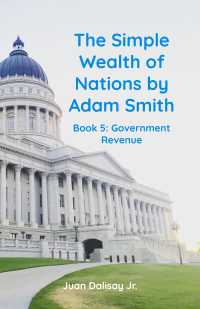Three Modes of Exchange
December 29, 2021 7 minutes • 1424 words
Table of contents
-
7 Barter Disadvantages Addressed
- 1. Lack of Double Coincidence of Wants
- 2. Lack of any common unit of measure
- 3. Lack of Means of Subdivision
- 4. Lack of Way for Future Payments
- 5. Lack of Way to Store Purchasing Power and the Perishable Nature of Some Goods
- 6. Possible big difference in delivery times and costs for items involved
- 7. Global Price Fluctuations
Value transfers between people in 5 ways, which we call the 5 modes of exchange which matches the 5 layers of reality:
| Mode | Layer | Mode of Value |
|---|---|---|
| 1 | Aether | Inspiration (Useful ideas or energy that come from nowhere) |
| 2 | Spacetime | Luck (being at the right place at the right time) |
| 3 | Radiant | Donation, Gift, or Investments that Lose Value |
| 4 | Radioactive | Barter or Investments that Earn Value |
| 5 | Material | Money or Currency |
These come in a ratio to make up 100% value for society.
For example, the invention of an car or automobile might require:
- Inspiration (Mode 1) for an idea of inventing a car
- Bumping into an investor (Mode 2) while going out to lunch
- Him giving a grant (Mode 3) for you to make a prototype, and then him investing (Mode 4) money (Mode 5) to build a shop to produce a car
All these modes lead to the production of a car for society.
However, we are concerned with the physical means of exchange, and not the metaphysical ones. This is why we will focus on the 3 modes of Exchange:
- Money
- Barter
- Donation in money or kind
When you donate, you get nothing back other than the abstract gratitude of the person you donated to. Therefore, it is an exchange of something physical for something abstract or aethereal.
Money and donations are already known in Economics. But barter has been forgotten after money became prevalent. This is why we need to address the common misconceptions about barter.
7 Barter Disadvantages Addressed
The following are the common disadvantages of barter:
1. Lack of Double Coincidence of Wants
Persons must have matching requirements for barter to work
Our Response: This is only true for bilateral barter or trade involving two persons. The barter trade proposed by Adam Smith and EF Schumacher is multilateral wherein trade is circular and not direct.
2. Lack of any common unit of measure
If A has rice, and B has wheat, then how much of rice will exchange for how much of wheat? If there are 500 goods, we will have to work out 124,750 possible ratios of exchange which is an enormously difficult task
Our Response: We use barter credits which is pegged to the value of 1 kilogram of rice. The ratios are known by each exchanger and are arrived at by natural negotiation or trial and error. For example, if a haircut is $3 when rice is $1 per kilo in normal times, then haircuts have a normal ratio of
1 : 3. This leads to less inflation and more price stability.
3. Lack of Means of Subdivision
One coffee mug cannot be exchanged for half a shirt.
Our Response: This is exactly why we use barter credits. Assuming a mug is $2, a shirt is $4, and a kilo of rice is $1. Then the shirt supplier has to buy 2 mugs to exchange a shirt as a 2:1 ratio. The value is pegged to rice where rice is 1 point. The mug seller can give 1 mug today (as a 1 point credit) and another mug after 6 months (leading to 2 points credit) and get the shirt (to claim his credit). Alternatively, he can get the shirt now in exchange for a mug (the 1 point credit going to the shirt seller), and give the second mug after 6 months (to extinguish that 1 point credit). This system is inflation-resistant.
4. Lack of Way for Future Payments
There is no way to write contracts for future payments.
Our Response: The points credits stay recorded indefinitely since they represent the value of rice which everyone needs as long as humanity exists. Having 1 point credit receivable from Martha means Martha owes you anything worth the current market price of 1 kilogram of rice.
5. Lack of Way to Store Purchasing Power and the Perishable Nature of Some Goods
Money can be stored but not all goods, such as eggs, can be kept until one retires.
Our Response: The barter credits can last indefinitely. Goods do not need to be stored up to pay them. Everything is a ratio. These ratios do not change drastically through time unless new technologies are discovered. For example, oil was not so important before the invention of the combustion engine. Rather, the combustion engine benefitted the ratios for oil, but reduced the ratios for coal.
6. Possible big difference in delivery times and costs for items involved
Company A might trade a single expensive item for many of Company B’s cheap items to be delivered many times, exposing Company A to more risk than Company B.
Our Response: The ratios of expensive finished products and luxuries might fluctuate more than the ratios of basic commodities and necessities. But the exchangers are free to negotiate the exchange terms and timelines for maximum fairness. Usually, this is done by trial and error just like a money transaction.
7. Global Price Fluctuations
Prices can fluctuate in the world market very quickly.
Our Response: Barter credits focus on the ratio of the value of goods to each other, not on the nominal money price. In case of hyperinflation, the system can switch to ratios with slight adjustments. For example, during the 2022 typhoon season, market price of rice in the Philippines rose from 35 pesos per kilo to 50 pesos. Yet the government imposed a price cap of 41 pesos. So it follows that each point equals to 41 pesos and not 50. So the system is a free market, but not liberal.






